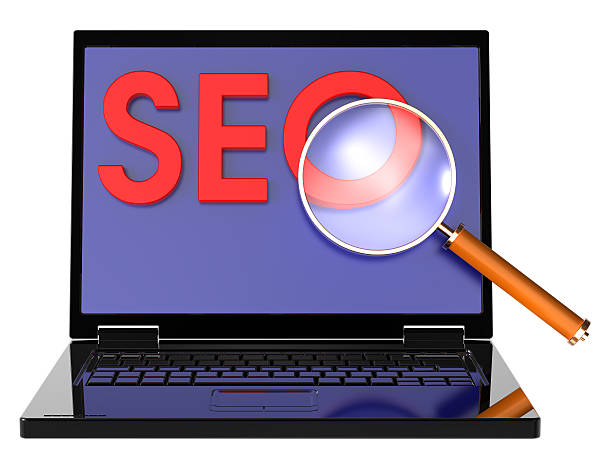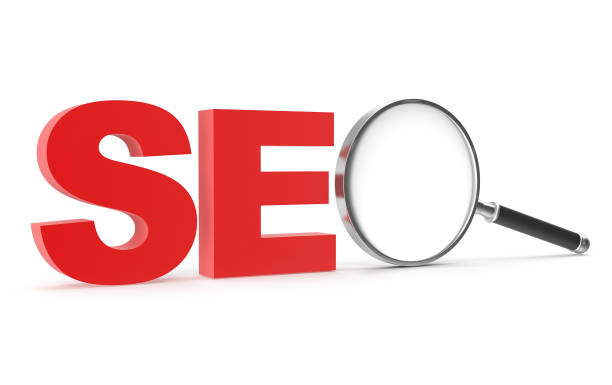Introduction to SEO and its Importance

In today’s digital world, where competition for visibility grows daily, online presence is not just about having a website; it’s about ensuring your website is discovered by your target audience.
This is where #SEO, or Search Engine Optimization, plays its vital role.
SEO is a set of techniques and strategies aimed at improving a website’s ranking in the organic search results of engines like Google.
Imagine your website as a shop on a main street; without SEO, your shop is located in a dark alley with no sign, and no one can find it.
But with SEO, your shop is moved to the main street and has a bright sign that thousands of people see every day.
The main goal of SEO is to increase organic traffic; traffic obtained through natural user searches without paid advertising.
This type of traffic is not only more sustainable but also typically has a higher conversion rate, as users are actively searching for your product or service.
SEO also helps increase brand credibility, as websites that rank high in search results appear more authoritative and trustworthy to users.
Understanding these basic principles of SEO is the first step for any business that wants to succeed in the online space.
The importance of this process lies in the fact that even with the best content or product, if users cannot find you, all efforts will be in vain.
Therefore, investing in SEO is a necessity for survival and growth in the digital age.
The first step for any online activity is a deep understanding of SEO’s importance and function to establish successful strategies.
Did you know that 85% of customers check your company’s website before any interaction?
With Rasavob, build a company website worthy of your credibility.
✅ Increase customer credibility and trust
✅ Attract high-quality leads
⚡ Get free website design consultation
Types of SEO and Their Differences

Search Engine Optimization is a broad field generally divided into three main categories: On-Page SEO, Off-Page SEO, and Technical SEO.
Each of these categories focuses on different aspects of the website and its connection to the outside world, together forming a comprehensive SEO strategy.
On-Page SEO includes all optimizations performed directly on your website; this includes content optimization, page titles, meta descriptions, heading tags, proper keyword usage, image optimization, and URL structure.
The main goal of On-Page SEO is to send clear signals to search engines about the topic and quality of your content.
This part of SEO requires a detailed explanation and analysis of the nature of your website’s pages.
In contrast, Off-Page SEO refers to activities performed outside your website, aiming to increase your domain’s credibility and authority.
The most important aspect of Off-Page SEO is link building (backlinks); that is, receiving links from other websites to your website.
Quality links from reputable sites indicate to search engines that your content is valuable and trustworthy.
Activities such as social media marketing, forum participation, and influencer marketing also fall into this category.
Technical SEO, as its name suggests, deals with the technical aspects of the website, ensuring that search engines can easily crawl and index your website.
This includes optimizing site loading speed, mobile responsiveness, using HTTPS, logical site structure, creating an XML sitemap, and a robots.txt file.
Technical SEO is a specialized field that requires high technical knowledge and provides the foundation for the success of other SEO types.
Without a strong technical foundation, even the best content and links may not rank well.
Combining these three optimization approaches creates a comprehensive SEO strategy that can significantly improve your website’s visibility.
Keyword Research; The Cornerstone of SEO

Keyword research is one of the most fundamental and important steps in any successful SEO strategy.
Keywords are the phrases and words that users type into search engines to find the information, products, or services they need.
Without a deep understanding of the words your target audience searches for, optimizing your website would be meaningless.
The keyword research process involves identifying, analyzing, and selecting the best keywords to target your website’s content.
This helps you not only attract more traffic but also direct relevant and high-quality traffic to your website, which is more likely to convert into customers.
To conduct effective keyword research, you should look for keywords that have a decent search volume (meaning a significant number of people search for them) and, at the same time, do not have high competition.
Additionally, understanding the user’s “Search Intent” is crucial.
Is the user looking for information (informational keywords)? Do they intend to buy (commercial keywords)? Or are they looking for a specific website (navigational keywords)? Answering these questions will help you select the right keywords and produce relevant content.
Long-Tail Keywords, which consist of three or more words, usually have lower search volume but are much more targeted and have less competition, making them an excellent option for attracting quality traffic.
Numerous tools are available for keyword research that can provide valuable guidance.
Tools like Google Keyword Planner, Ahrefs, Semrush, and Moz Keyword Explorer can help you discover new keywords, check search volume, and analyze competition.
After identifying keywords, you should strategically use them in your page titles, meta descriptions, headings, body text, and URLs, but always avoid Keyword Stuffing, which can harm your ranking.
This is an important analytical part of the SEO process that yields long-term results.
| Keyword Type | Explanation | Example | Search Intent |
|---|---|---|---|
| Informational | User is looking to gain knowledge or answer a question. | “What is SEO?”, “Benefits of the Ketogenic Diet” | Learning, research |
| Commercial/Transactional | User intends to purchase a product or service. | “Buy Asus Laptop”, “Website Design Price” | Purchase, reservation, registration |
| Navigational | User is looking to find a specific website or page. | “Instagram”, “Digikala Website” | Direct access |
| Long-Tail Keywords | More specific search phrases with multiple words. | “Best laptop for engineering students 2023” | Highly targeted, specific intent |
Content Optimization for Search Engines

Content is king; this phrase is entirely true in the world of SEO, especially for search engine optimization.
After keyword research, the next step is to produce high-quality, relevant content that is both appealing to users and understandable by search engines.
Content optimization is not just about using keywords; it involves creating content that provides real value to the audience and answers their questions.
Google and other search engines increasingly emphasize the quality, depth, and credibility of content.
Your content should be comprehensive, accurate, and up-to-date to be recognized as a reliable source.
One of the key aspects of content optimization is adhering to the E-A-T (Expertise, Authoritativeness, Trustworthiness) principle, which has now expanded to E-E-A-T (Experience, Expertise, Authoritativeness, Trustworthiness).
This means that your content should not only be written by an expert but also demonstrate authority in the relevant field and be trustworthy.
The addition of “Experience” means that the author should have firsthand, real-world experience on the subject.
This is especially important for educational content and areas related to health, finance, or security.
Content structure is also very important for SEO and user experience.
Using headings (H1, H2, H3), short paragraphs, lists, and relevant images helps improve readability.
Your content should be thought-provoking content, meaning it should make users think and encourage interaction.
This can be achieved by posing questions within the text, offering new perspectives, or inviting comments.
Internal linking to other relevant pages on your website not only helps search engines crawl the site better but also improves user experience and increases user time on site.
Finally, content freshness is also an important factor; regularly updating old content with new and relevant information can help maintain and improve SEO ranking.
Does your current website convert visitors into customers or drive them away? Solve this problem forever with professional corporate website design by Rasavob!
✅ Build powerful credibility and branding
✅ Attract target customers and increase sales
⚡ Get your free consultation now!
Technical SEO and Its Importance in Ranking
![]()
Technical SEO is the foundation of a website optimized for search engines.
While quality content and backlinks are crucial for ranking, without a strong technical infrastructure, your efforts may be wasted.
Technical SEO ensures that search engines can easily find, crawl, index, and understand your website.
This part of SEO requires specialized knowledge and includes a wide range of optimizations that directly affect the website’s performance and accessibility for search engines.
One of the most vital aspects of technical SEO is site loading speed.
Both users and search engines value high speed.
Slow-loading websites offer a poor user experience and can increase the Bounce Rate, which in turn can harm SEO ranking.
Tools like Google PageSpeed Insights can help identify speed issues.
Mobile responsiveness is also a critical ranking factor, as most searches today are done via mobile devices.
A website must provide a consistent user experience across all screen sizes.
Other important factors in technical SEO include: using HTTPS for security (which is a ranking factor), clean and logical URL structure, creating an XML Sitemap to help search engines discover all website pages, and a robots.txt file to control search engine crawling in specific parts of the site.
Implementing structured data (Schema Markup) also helps search engines better understand your content and display Rich Snippets in the search results page.
Regularly checking and fixing crawl errors in Google Search Console is another important activity in technical SEO.
By focusing on these aspects, you can ensure that your website is technically ready to achieve the highest rankings.
Backlink Building and Domain Authority

Backlink building, an integral part of Off-Page SEO, means receiving links from other websites to your website.
These links act like votes of confidence from other sites and signal to search engines that your content is valuable and trustworthy.
The more high-quality and relevant links from reputable domains you have, the higher your website’s Domain Authority will be, which significantly impacts SEO ranking.
However, the quality of links is far more important than their quantity.
One link from a highly authoritative and relevant website in your field can have a greater impact than dozens of links from low-quality or spammy websites.
There are various strategies for backlink building that can guide you in acquiring valuable links.
One of the most effective methods is producing very high-quality and valuable content that is naturally linked to by others (Content Marketing).
Content such as research articles, infographics, case studies, and free tools have high potential for attracting links.
Connecting with influencers and bloggers in your industry can also lead to link-building opportunities.
You can receive links to your website by offering guest content or collaborating on projects.
Another method is using the “Broken Link Building” technique; that is, finding broken links on other websites and suggesting your content as a replacement.
Additionally, active presence on social media and relevant forums, while not directly creating “follow” links, can help increase brand awareness and consequently attract natural links.
It should be noted that Google strictly penalizes purchased links or unnatural links created solely to manipulate rankings.
Therefore, the focus should always be on building organic and valuable links to ensure your SEO strategy is sustainable and successful.
Local SEO and Its Role in Physical Businesses

Local SEO is a branch of Search Engine Optimization that helps businesses achieve better rankings in search results related to specific geographic locations.
This is especially crucial for businesses with a physical location, such as restaurants, shops, clinics, and local services.
When a user searches for a phrase like “restaurant near me” or “best car repair shop in Tehran,” search engines display local results at the top of the page, often including a map of locations and their contact information.
Local SEO ensures that your business is prominently visible in these results.
The most important tool for local SEO is Google My Business (GMB) Profile.
Fully optimizing this profile with accurate and up-to-date information (name, address, phone number, business hours, photos, and proper categorization) is the first and most important step.
Google uses this information to display your business on Google Maps and in local search results.
Receiving positive reviews and ratings from customers also plays a key role in local SEO, as it increases your business’s trustworthiness and credibility in the eyes of users and search engines.
Responding to reviews, both positive and negative, demonstrates your commitment to customers.
In addition to GMB, creating Local Citations in local and general online directories (such as Yelp, Kolah, and other industry directories) is also important.
These citations must include your business’s Name, Address, and Phone number (NAP) and must be consistent across all platforms.
Optimizing website content with local keywords (e.g., “coffee shop Saadat Abad”) and creating separate pages for each branch (if the business has multiple branches) are other important local SEO tactics.
This is a comprehensive explanation of how to increase visibility in the local market and is crucial for attracting potential customers from your geographic area.
| Ranking Factor | Explanation | Impact on Local SEO |
|---|---|---|
| Google My Business (GMB) Profile | Complete and up-to-date business information (NAP, business hours, category, photos). | Most important factor; basis for display in Local Pack and Google Maps. |
| Customer Reviews and Ratings | Number and quality of positive reviews; responding to them. | Increases user and search engine trust; improves ranking. |
| Citations | Consistent NAP presence in online directories. | Business credibility and recognition by search engines. |
| Local Website Optimization | Use of local keywords in content, title, and meta description. | Content relevance to local user searches. |
| Local Links | Receiving backlinks from reputable local websites (media, blogs). | Increased domain authority in the geographic area. |
Data Analysis in SEO

For an SEO strategy to be successful, merely implementing techniques is not enough; performance must be continuously monitored and analyzed.
Data analysis allows you to understand which of your SEO efforts have yielded results, which areas need improvement, and where new opportunities lie.
Without data, SEO is like moving in the dark.
Various tools are available for this purpose, two of the most vital being Google Analytics and Google Search Console.
Google Analytics (GA) provides comprehensive information about your website visitors; including where users came from, how long they stayed on your site, which pages they visited, and what actions they took.
By analyzing this data, you can understand user behavior and identify your website’s strengths and weaknesses.
For example, if you notice that users quickly leave the site after visiting a specific page (high bounce rate), it might indicate a need to improve that page’s content or design.
GA helps you analyze the performance of your SEO campaigns accurately by tracking organic traffic, conversion rates, and other key metrics.
Google Search Console (GSC) is a tool provided directly by Google that offers valuable insights into how your website appears in search results.
GSC shows you which keywords your website ranks for, how many times it has appeared in search results (Impressions), how many clicks it has received (Clicks), and its Click-Through Rate (CTR).
This tool also reports crawl errors, mobile usability issues, and security problems, which are vital for maintaining your website’s technical health.
By using GSC data, you can identify underperforming keywords and adjust your content strategy to improve them.
Combining data from these two tools provides a comprehensive view of your SEO performance and enables data-driven decisions that ultimately help continuously improve your website’s ranking and traffic.
Are you falling behind in the competition with large online stores?
Rasavob makes your business go online with professional e-commerce website design and increases your market share!
✅ Boost brand credibility and customer trust
✅ Easy shopping experience leading to more sales
⚡ Act now to get a free website design consultation!
Challenges and Future Trends of SEO

The world of SEO is constantly evolving, and what works today might be obsolete tomorrow.
Search engines continually update their algorithms to provide the best and most relevant results to users.
These dynamic changes create challenges for SEO professionals but also present new opportunities for innovation and advancement.
Awareness of future SEO trends is essential for maintaining competitiveness and long-term success.
One of the most important current trends is the role of artificial intelligence in search.
Algorithms like Google RankBrain and BERT, and more recently generative AI systems, help search engines better understand user search intent and provide more accurate results.
This means a greater emphasis on natural, comprehensive, and user-centric content.
Voice Search is also growing, with more users employing voice assistants for searching.
This trend increases the importance of conversational keywords and direct answers to questions.
Therefore, optimizing for voice search means thinking about how users speak, not just how they type.
Video SEO is also becoming an important area, given the increasing popularity of platforms like YouTube.
Optimizing videos by using appropriate keywords in titles and descriptions, tags, and captions can help increase their visibility in search results.
Core Web Vitals, a set of user experience metrics, are considered ranking factors by Google, such as loading speed, interactivity, and visual stability of the page.
This means that Technical SEO has become more important than ever.
By tracking and adapting to these changes, SEO professionals can not only withstand challenges but also discover novel and exciting opportunities for growth and ensure that websites are always at their peak performance.
Conclusion and Next Steps in the SEO Journey

SEO is not a one-time process but an ongoing, evolving effort that requires continuous monitoring, analysis, and updating.
Throughout this article, we discussed the importance of SEO as the backbone of digital visibility, its various types (On-Page, Off-Page, Technical), the vital role of keyword research, content optimization, backlink building, local SEO, and data analysis.
We also touched upon the challenges and future trends shaping the SEO landscape.
For any business or individual aiming to succeed in the online space, understanding and implementing SEO principles is essential.
This journey is accompanied by continuous learning and constant evaluation.
The next steps in the SEO journey include:
1.
Continuous Monitoring: Always monitor your website’s performance with tools like Google Analytics and Google Search Console to track any changes in traffic or ranking.
2.
Content Updates: Regularly update your content and ensure that the information is accurate and relevant to the latest industry changes.
3.
Keeping Up with Algorithms: Stay informed about changes in search engine algorithms and adjust your SEO strategy accordingly.
Google constantly updates its algorithms to provide the best results.
4.
User Experience (UX): Always prioritize user experience.
A website with easy navigation, high speed, and responsive design is not only appealing to users but also sends positive signals to search engines.
5.
Strategy Diversification: Instead of focusing on one specific aspect of SEO, adopt a comprehensive approach that includes On-Page, Off-Page, and Technical SEO.
Finally, be patient.
SEO results typically take time, and it may take weeks or months to see significant improvements.
But with continuous effort and the right strategy, SEO can become one of your most powerful digital marketing tools and guarantee your business’s long-term success.
Frequently Asked Questions
| Question | Answer |
|---|---|
| What is SEO? | SEO, or Search Engine Optimization, is the process of increasing the quality and quantity of website traffic by improving the site’s ranking in natural (organic) search results of search engines like Google. |
| What are the main types of SEO? | SEO is divided into three main categories: On-Page SEO, Off-Page SEO, and Technical SEO. |
| What does On-Page SEO include? | On-Page SEO includes optimizing elements within the website, such as keywords, Title Tags, Meta Descriptions, content, URL structure, images, and internal links. |
| What is Off-Page SEO? | Off-Page SEO refers to activities performed outside of your website that help improve its ranking, such as Backlink Building, social media marketing, and Brand Mentions. |
| What is Technical SEO? | Technical SEO focuses on optimizing the technical aspects of a website to help search engines crawl and index it more effectively. This includes site speed, mobile-friendliness, site structure, Sitemaps, and the Robots.txt file. |
| What role do Keywords play in SEO? | Keywords are phrases that users enter into search engines. Proper and targeted use of relevant keywords in content and site elements helps search engines understand your page’s topic and display it for relevant searches. |
| What is a Backlink and why is it important? | A backlink, or inbound link, is a link from one website to another. Backlinks act as a “vote of confidence” from other sites for search engines and play a significant role in a site’s credibility and ranking, especially if they come from reputable sites. |
| What impact does quality content have on SEO? | Quality, relevant, comprehensive, and unique content not only attracts and retains users but also signals to search engines that your page is valuable. This helps improve rankings, reduce Bounce Rate, and increase user time on site. |
| Why is site loading speed important for SEO? | Site loading speed is an important ranking factor for Google. Faster sites provide a better user experience, have lower bounce rates, and are preferred by search engines. |
| Is SEO a one-time process? | No, SEO is an ongoing and long-term process. Search engine algorithms are constantly changing, competition is increasing, and website content also needs updates. Therefore, SEO requires continuous monitoring, analysis, and optimization. |
And other services of Rasavob Advertising Agency in the field of advertising
Smart Marketplace: Designed for businesses seeking to manage campaigns through the use of real data.
Smart Advertising Campaign: A professional solution for digital branding with a focus on intelligent data analysis.
Smart Customer Journey Map: A novel service to improve SEO ranking through customized user experience.
Smart Advertising Campaign: A creative platform to enhance online growth using real data.
Smart UI/UX: Designed for businesses looking to increase website visits through precise audience targeting.
And over hundreds of other services in the field of internet advertising, advertising consultation, and organizational solutions
Internet Advertising | Advertising Strategy | Advertorial
Sources
SeoPars
Pishro – SEO Blog
IranHost – SEO Articles
Aparat – SEO Training
? For significant growth of your business in the digital world, Rasavob offers comprehensive digital marketing solutions. With our professional services, from WordPress website design to SEO and social media management, experience a powerful and impactful presence.
📍 Tehran, Mirdamad Street, next to Bank Markazi, Kazerun Jonubi Alley, Ramin Alley, No. 6




